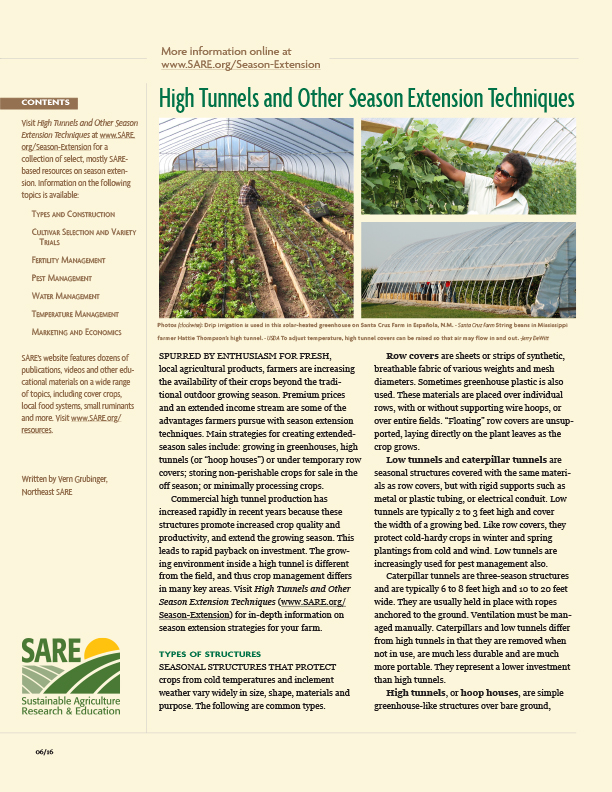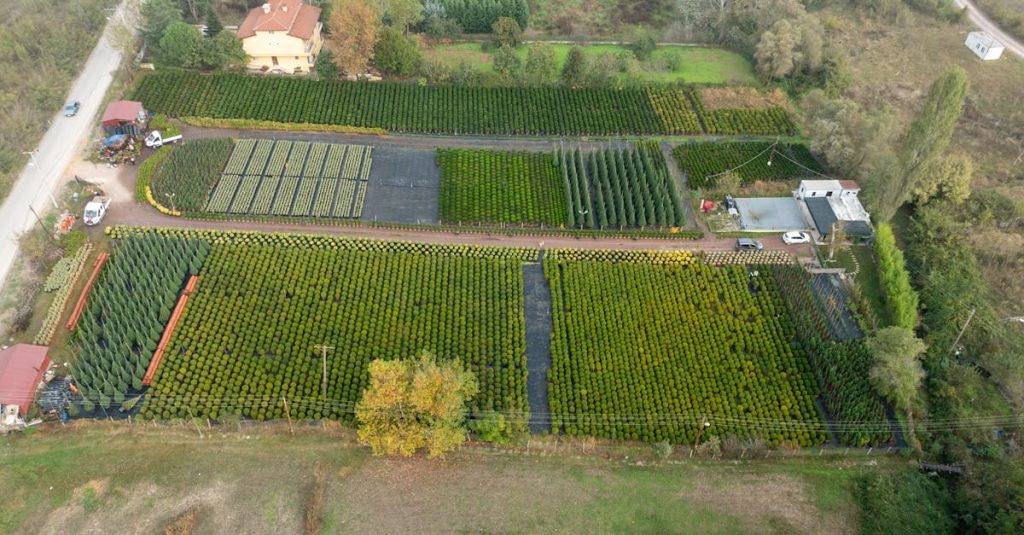Have you ever wondered why some crops thrive in your garden while others barely survive? The secret might be in your soil.
Understanding your soil type is like unlocking a hidden code that can transform your planting success. Seasonal crop planning based on soil type is not just for the experts—it’s a game-changer for anyone who wants a bountiful harvest. Imagine the satisfaction of seeing your garden flourish, simply because you’ve learned to work with your soil, not against it.
We’ll guide you through the essentials of matching your crops to your soil type, ensuring that your efforts are rewarded with lush, thriving plants. Don’t just grow; grow smart! Let’s dig deeper into how you can maximize your garden’s potential.

Assessing Soil Characteristics
Understanding soil characteristics is key to seasonal crop planning. Different soil types influence water retention and nutrient availability. Crops thrive when matched with soil suited to their specific needs.
Understanding the soil characteristics of your farm can be the key to successful seasonal crop planning. Soil is more than just dirt; it is a dynamic mix of organic matter, minerals, gases, liquids, and countless organisms that together support life. By assessing these characteristics, you can determine which crops will thrive in your soil. This helps you avoid costly mistakes and maximizes your yield. A few years ago, I learned the hard way that ignoring soil characteristics can lead to poor crop performance. After witnessing my tomatoes struggle in clay-heavy soil, I realized the importance of tailoring your crops to your soil’s unique profile. Let’s dive into how you can effectively assess your soil characteristics.Understanding Soil Texture
Soil texture refers to the proportion of sand, silt, and clay in the soil. Each component affects water retention and drainage differently. Sandy soils drain quickly but may require frequent watering. Clay soils retain moisture but can become waterlogged easily. By knowing your soil texture, you can select crops that are suited to those conditions.Evaluating Soil Ph
Soil pH affects nutrient availability and microbial activity. Most crops prefer a pH range between 6 and 7. You can test your soil pH using a simple kit from a garden store. If your soil is too acidic or alkaline, consider adding lime or sulfur to adjust it. This simple step can prevent nutrient deficiencies and boost plant health.Identifying Organic Matter Content
Organic matter improves soil structure, moisture retention, and nutrient supply. It is crucial for healthy plant growth. You can increase organic matter by adding compost or mulch to your soil. This not only enhances soil fertility but also encourages beneficial organisms.Assessing Soil Drainage
Good soil drainage is essential for root health. Poor drainage can lead to root rot and other diseases. To test drainage, dig a hole and fill it with water. If the water drains within a few hours, your drainage is adequate. Slow drainage may require you to amend the soil or choose water-tolerant crops.Examining Soil Fertility
Soil fertility is about the availability of nutrients like nitrogen, phosphorus, and potassium. You can use a soil test to identify deficiencies. Once you know the nutrient levels, you can add fertilizers or organic amendments accordingly. This ensures that your crops have the nutrients they need to grow robustly. As you assess your soil, consider how these characteristics can guide your crop choices. What surprises have you encountered in your soil assessments? Share your experiences and learnings in the comments below.Selecting Crops For Soil Types
Choosing the right crops depends on soil type and season. Sandy soils suit carrots and potatoes. Clay-rich soils favor rice and broccoli. Planning crops according to soil ensures better yield. Healthy soil produces healthy crops.
Selecting crops that suit your soil type is crucial for a successful harvest. Different soils have unique characteristics that affect plant growth. If you’ve ever struggled with poor crop yield, you might need to reconsider your crop choices based on your soil’s properties. Understanding the connection between soil types and crop suitability can turn your gardening efforts into fruitful ventures. Let’s dive into how you can make the best choices for your soil type, ensuring a thriving garden or farm.Understanding Soil Types
Soils vary widely, from sandy to clayey, each with distinct qualities. Sandy soil drains quickly but doesn’t hold nutrients well. Clay soil retains moisture but can become waterlogged. You might find loamy soil is a perfect balance, offering good drainage and nutrient retention. Knowing your soil type is the first step to selecting the right crops.Crops For Sandy Soil
Sandy soil warms up quickly, making it ideal for early crops. Root vegetables like carrots and radishes thrive here. They can penetrate the loose soil easily. You might also consider planting asparagus or strawberries, which appreciate the good drainage sandy soils provide.Crops For Clay Soil
Clay soil is rich in nutrients but requires careful management. Opt for moisture-loving plants like broccoli and cabbage. Their roots can push through the dense soil. If managed well, clay soil can provide a bountiful harvest of soybeans or even rice in wetter areas.Crops For Loamy Soil
Loamy soil is often considered the gardener’s best friend. It supports a wide variety of crops, thanks to its balanced texture. You might grow tomatoes, peppers, or corn, benefiting from both nutrient retention and drainage. Loamy soil is forgiving, allowing for a diverse garden.Testing Your Soil
Have you ever tested your soil? It’s an essential practice for effective crop planning. A simple soil test can reveal pH levels, nutrient content, and texture. With this information, you can choose crops that are naturally suited to your soil’s conditions.Adjusting Your Soil
If your soil type isn’t ideal, don’t worry. You can amend it by adding organic matter or specific fertilizers. Compost can improve sandy soil’s nutrient content, while gypsum can help break up clay soil. Consider whether your current soil type aligns with your desired crops, and make adjustments where needed.Personal Experience: My Tomato Triumph
I once planted tomatoes in my clay-heavy garden, only to face disappointment as they struggled. After realizing my mistake, I amended the soil with gypsum and compost. The following season, my tomato plants flourished. This taught me the importance of aligning crops with soil types. In your gardening journey, what soil type are you dealing with? How might changing your crop choices improve your harvest? By understanding and adapting to your soil’s needs, you can transform your garden into a thriving, productive space.Implementing Crop Rotation Strategies
Seasonal crop planning optimizes soil health by aligning crop rotation with soil type. Different crops improve soil nutrients and structure. Tailoring rotations to soil enhances yield and sustainability.
Implementing crop rotation strategies is a vital aspect of successful seasonal crop planning. It involves alternating different types of crops in the same area across different seasons or years to maintain soil health and optimize yields. Crop rotation helps to prevent soil depletion, control pests, and enhance biodiversity. By understanding how crop rotation can benefit your farm, you can make informed decisions that improve your harvest and support sustainable farming practices.Understanding Crop Rotation Benefits
Crop rotation is more than just changing crops; it’s about creating a balance in your soil. Different crops take different nutrients from the soil and leave behind different residues. Rotating crops can help you maintain soil fertility by ensuring no single nutrient is overly depleted. You might ask, what impact does this have on pest control? Certain pests thrive on specific plants, so rotating crops disrupts their life cycle and reduces their numbers naturally.Choosing The Right Crop Sequence
Selecting the right sequence of crops is crucial for effective crop rotation. Legumes, for example, can enrich the soil with nitrogen and should be followed by crops that benefit from this nutrient, like cereals. Consider your soil type and climate when planning your crop rotation schedule. A sandy soil might benefit from crops that have deep roots, while clay soil might need crops that enhance drainage. How can you determine the best sequence? Look at your past experiences and experiment with different combinations to see what yields the best results.Planning For Soil Health
Healthy soil is the foundation of productive farming, and crop rotation plays a key role in maintaining it. By rotating crops, you can prevent the buildup of harmful pathogens and diseases in the soil. Think of it as giving your soil a break from hosting the same plants and pests year after year. What strategies can you use to ensure soil health remains optimal? Regular soil testing can help you adjust your crop rotation plan and address any deficiencies or imbalances.Implementing Crop Rotation In Practice
Putting crop rotation into practice requires careful planning and execution. Start by mapping out your fields and noting their soil types. Then, create a rotation schedule that aligns with your farm’s needs and goals. It’s helpful to keep detailed records of your crops, yields, and soil conditions to assess the effectiveness of your rotation strategies over time. Have you ever considered using technology to aid in planning? Modern farming apps can help you track and optimize your crop rotation efforts with precision.Overcoming Common Challenges
Crop rotation isn’t without its challenges. You might face difficulties with timing, unexpected weather changes, or financial constraints. Yet, these obstacles can be overcome with a proactive approach. Seek advice from other farmers who have successfully implemented crop rotation. What about financial challenges? Look into grants or subsidies that might be available to support sustainable farming practices. Engaging with a community can offer new insights and solutions.
Monitoring And Adjusting Practices
Monitoring and adjusting practices in seasonal crop planning is crucial. It ensures optimal growth and yield. Soil type plays a significant role in this process. Each soil type has distinct characteristics. These characteristics affect water retention, nutrient availability, and plant compatibility. Regular monitoring helps in identifying changes in soil conditions. It is essential for making timely adjustments. This can improve crop productivity and sustainability.
Understanding Soil Moisture Levels
Soil moisture levels vary with weather patterns. Frequent checks are necessary. Dry soil can stress plants. Wet soil may lead to root diseases. Use moisture meters for accurate readings. Adjust irrigation schedules accordingly. This helps maintain ideal moisture balance.
Evaluating Nutrient Needs
Nutrient needs differ across soil types. Conduct soil tests to determine nutrient levels. These tests guide fertilizer application. Avoid over-fertilization. It can harm the environment. Proper nutrient management supports healthy plant growth.
Observing Plant Health
Regularly inspect plants for signs of stress. Wilting or yellowing leaves indicate issues. Soil type affects plant health. Adjust practices based on observations. This includes altering watering or fertilization methods. Such adjustments can improve plant resilience.
Adjusting Crop Rotation
Crop rotation benefits soil health. Different crops have varied nutrient requirements. Adjust rotation based on soil type. This prevents nutrient depletion. It also reduces pest and disease buildup. Crop rotation enhances soil fertility over time.
Responding To Weather Changes
Weather impacts soil conditions. Extreme temperatures affect soil moisture. Heavy rains can cause erosion. Monitor weather forecasts regularly. Adjust practices to protect crops. Timely actions can mitigate adverse effects.

Conclusion
Seasonal crop planning based on soil type boosts farm productivity. Understanding soil qualities aids in selecting the right crops. This ensures healthier growth and better yields. Farmers can make informed decisions. Soil type affects water retention and nutrient availability. Matching crops to soil type reduces waste and increases efficiency.
Sustainable practices benefit both the environment and economy. Planning ahead minimizes risks and maximizes returns. Staying informed on soil conditions is crucial. Farmers should continually assess and adapt. This approach leads to successful and sustainable farming. Embrace this strategy for a fruitful harvest.



